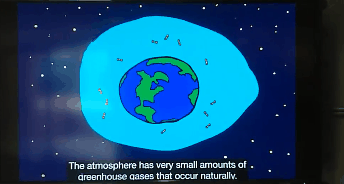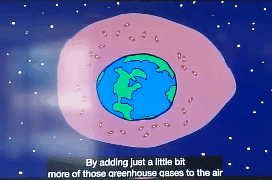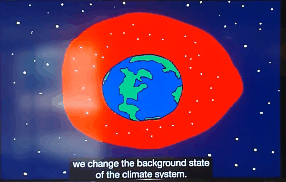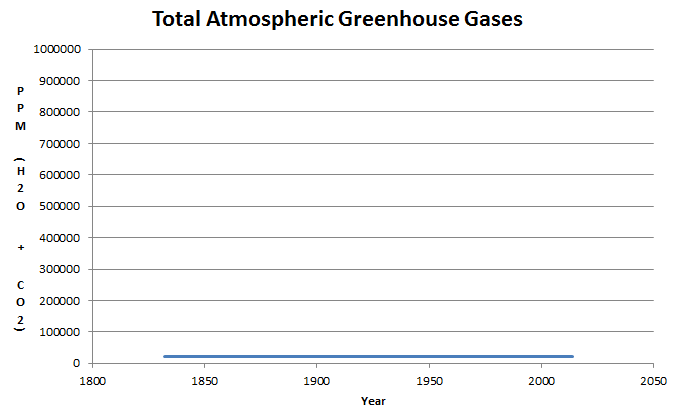The atmosphere contains about 20,000 PPM greenhouse gases. The increase of 100 PPM CO2 over the past century, represents a 0.5%increase in total greenhouse gases. The graph below shows the frightening reality. Nothing is happening to the climate system.
CO2 absorption spectra is largely saturated by 30 PPM, and the small increase in DLWR over the last century is mainly due to increased blackbody radiation as CO2 increases.






So what is the comparative strength or effect of co2 verses h2o?
H2O is a much more effective greenhouse gas than CO2.
And the gasses used in the manufacture of solar panels are thousands of time stronger than either as GHGs.
Alarmists tell us that 99% of the atmosphere is not a greenhouse gas – it neither absorbs nor emits significant infra-red radiation.
NASA tells us the Earth must emit as much IR to space to compensate for the energy input from the Sun else the earth will heat up.
Trenberth et al tell us the Earth’s surfaces emit a mere 17% of the IR directly to space while greenhouse gases absorb the remaining 83% and emit that to space – just a rough summary of their Energy Budget.
If the above is true how does 99% of the atmosphere ever cool down because we all know it heats up and cools down all the time – how does the IR get out to space from 99% of the atmosphere ?
Logically increasing the percentage of one of the major”coolants” in the atmosphere – CO2 – is totally inconsistent with energy trapping or warming – quite the reverse in fact !
EVERY combustion reaction replaces NON IR ACTIVE oxygen with IR ACTIVE CO2 and this must increase the efficiency of energy loss by the atmosphere to space because oxygen does not radiate IR very much and the chances of transferring energy to IR Active gases increases with extra CO2.
I have always found alarmists arguments about GHGs to be ridiculous – if they account for 83% of the radiation from a basically non radiating atmosphere and they represent a small percentage then 2 consequences follow –
1. No wonder the atmosphere retains “heat” – it basically can’t lose it without a large concentration of GHGs – infra-red active molecules.
2. How does increasing the concentration of the major coolants inhibit radiation to space ??
One way the atmosphere can lose heat, without radiating it from the top, is to warm the surface and have the surface radiate it directly to space through one of the windows. Keep in mind, the atmosphere is almost perfectly transparent to IR in the N band around 9 or 10 microns. The surface radiates directly to space there (unless it hits a cloud).
Actually, most radiation from earth to space comes from the surface, through the various atmospheric windows:
http://www.hyzercreek.com/Infrared%20Sky%20001.jpg
What I find interesting in the 24 hr cycle, is the focus on Radiation during the day when effective daylight maybe as little as 8 hours. The proportional losses at Night into space, appears to be a differential factor that’s lost in the equation, towards balancing overall influences.
…
CO2 is going up, up & up but the temperature is turning down. I just hope those nut case warmists , don’t get the idea to tax H2O – because of the radiation concerns with Water Vapor in the atmosphere,,, the method in their madness, knows no limits…
Updated Dec 2014 CO2, CH4 and N2O were ( in ppm ) 398.6, 1.893, & 0.326 = 400.819 total ppm
If in 2013 CO2, CH4 and N2O were ( in ppm ) 396, 1.824, & 0.326 = 398.15 total ppm
Reading in 1995 were ( in ppm ) 360.8, 1.75 , & 0.312 = 362.062 total ppm
http://cdiac.ornl.gov/pns/current_ghg.html
ftp://aftp.cmdl.noaa.gov/products/trends/co2/co2_annmean_mlo.txt
percentages of total atmosphere 2014 (remember watervapor is not included in above ppm)
400.82 / 1,030,000.00 = 0.0389% (at 3% watervapor)
percentages of total atmosphere 2013 (remember watervapor is not included in above ppm)
398.15 / 1,030,000.00 = 0.03865%
percentages of total atmosphere 1995
362.062 / 1,030,000.00 = 0.03515 @ watervapor = 3%
So the rest of the atmosphere has changed (at 3% watervapor)(2014/2013/1995) 99.611% from 99.961% from 99.965%. = 0.354% 1995 to 2014 & 0.004% 1995 to 2013
That is the real change.
Reblogged this on Climate Collections and commented:
The atmosphere is already virtually opaque to the IR bands of terrestrial radiation that CO2 absorbs. That is, additional CO2 adds little additional IR absorption, and anthropogenic CO2 is insignificant to retention of terrestrial heat. “The atmosphere can’t get much opaquer.”